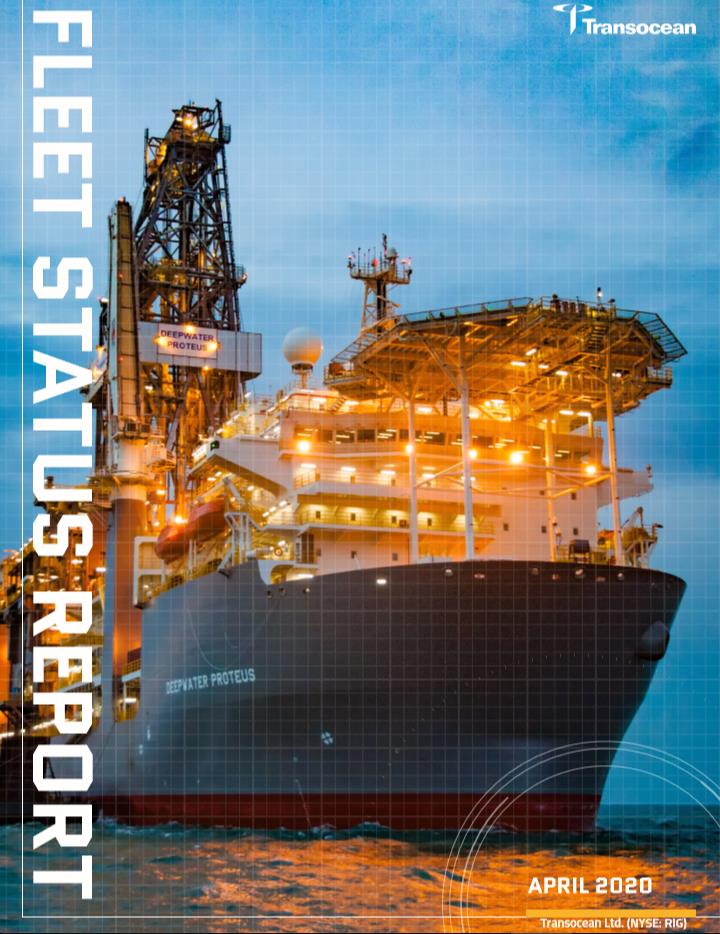Forward-Looking Statement. The statements made in the Fleet Update that are not historical facts are forward-looking statements within the meaning of Section 27A of the Securities Act of 1933 and Section 21E of the Securities Exchange Act of 1934. Forward-looking statements made in the Fleet Update include, but are not limited to, statements involving the estimated duration of customer contracts, contract dayrate amounts, future contract commencement dates and locations and planned shipyard projects and other out of service time. Such statements are subject to numerous risks, uncertainties and assumptions, including but not limited to, uncertainties relating to the level of activity in offshore oil and gas exploration and development, exploration success by producers, oil and gas prices, competition and market conditions in the contract drilling industry, shipyard delays, actions and approvals of third parties, possible cancellation or suspension of drilling contracts as a result of mechanical difficulties or performance, Transocean’s ability to enter into and the terms of future contracts, the availability of qualified personnel, labor relations and the outcome of negotiations with unions representing workers, operating hazards, factors affecting the duration of contracts including well-in-progress provisions, the actual amount of downtime, factors resulting in reduced applicable dayrates, hurricanes and other weather conditions, terrorism, political and other uncertainties inherent in non-U.S. operations (including the risk of war, civil disturbance, seizure or damage of equipment and exchange and currency fluctuations), the impact of governmental laws and regulations, the adequacy of sources of liquidity, the effect of litigation and contingencies and other factors described above and discussed in Transocean’s most recently filed Form 10-K, in Transocean’s Forms 10-Q for subsequent periods and in Transocean’s other filings with the SEC, which are available free of charge on the SEC’s website at www.sec.gov. Should one or more of these risks or uncertainties materialize, or should underlying assumptions prove incorrect, actual results may vary materially from those indicated. You should not place undue reliance on forward-looking statements. Each forward-looking statement speaks only as of the date of the particular statement, and we undertake no obligation to publicly update or revise any forward looking statements, except as required by law. |
Fleet Classifications. Transocean uses classifications for its drillships, semisubmersibles, and jackup rigs.The classifications reflect the company’s strategic focus on the ownership and operations of premium, high-specification units and are approximately as follows: “Ultra-Deepwater” are the latest generation of drillships and semisubmersible rigs and are capable of drilling in water depths equal to or greater than 7,500 feet; “Deepwater” rigs are drillships and semisubmersible rigs capable of drilling in water depths equal to or greater than 4,500 feet and less than 7,500 feet; “Harsh Environment” are premium rigs equipped for year-round operations in harsh environments; “Midwater Floaters” are semisubmersible rigs capable of drilling in water depths of greater than 300 feet and up to 4,499 feet. |
Stacking. An "Idle" rig is primarily between contracts, readily available for operations, and operating costs are typically at or near normal levels. A "Stacked" rig, on the other hand, is primarily manned by a reduced crew or unmanned and typically has reduced operating costs and is (i) preparing for an extended period of inactivity, (ii) expected to continue to be inactive for an extended period, or (iii) completing a period of extended inactivity. However, stacked rigs will continue to incur operating costs at or above normal operating costs for approximately 30 days following initiation of stacking. |

